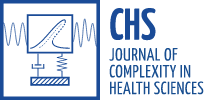The Influence of Heart Coherence on Synchronization Between Human Heart Rate Variability and Geomagnetic Activity
Categorieën
Steekwoorden
Categorieën
Steekwoorden
- Toon alle
- ADHD
- Angst/Paniek
- Bloeddruk
- Burnout
- Chronische pijn
- Cognitieve functie
- Cortisol/DHEA
- Dementie
- Depressie
- Diabetes
- Global Coherence
- Hart- & Vaatziekten
- Intuitie & Bewustzijn
- Kanker
- Kinderen/jeugd
- Kosten
- Leiderschap
- Meditatie/Mindfulness
- Metabool syndroom
- Obesitas/eetstoornis
- PTSS
- Schizofrenie
- Slaap & vermoeidheid
- Social Coherence
- Stress
- Veerkracht
- Wetenschap HRV & Coherentie
- Zwangerschap
The Influence of Heart Coherence on Synchronization Between Human Heart Rate Variability and Geomagnetic Activity

All biological systems, which are embedded within the Sun and Earth’s magnetospheres, are exposed to invisible fluctuating magnetic fields that span a wide range of frequencies [1]. It is well known that geomagnetic field line resonances and the Schumann resonances, which exist in the cavity between Earth and the ionosphere, generate a range of resonant frequencies that directly overlay those of the human brain, autonomic nervous system (ANS), and cardiovascular system. Of all the physiological systems studied, the rhythms produced by the brain and heart are most affected by changes in geomagnetic conditions [2-8]. It has been demonstrated that numerous physiological rhythms are affected by and can synchronize with solar and geomagnetic activity [9-12]. However, several recent studies that utilized continuous monitoring of heart rate variability (HRV) over longer time periods have shown that ANS activity can synchronize to a surprising degree with changes in the amplitude of resonant frequencies produced by geomagnetic field-line resonances, Alfvén waves and the Schumann resonances [13, 14].
HRV is the measurement of the time intervals between adjacent pairs of heartbeats, which reflects autonomic nervous system dynamics [15]. The amount of naturally occurring HRV one has reflects the functional status of codependent regulatory systems that operate over different time scales to adapt to environmental and psychological challenges [16]. Lower levels of variation in age-adjusted HRV indicate pathology, chronic stress, or insufficient functioning in regulatory systems in the neuro axis and is associated with of all-cause mortality [17-19]. Higher levels of HRV are associated with resiliency, capacity to self-regulate and to adapt to changing demands [16, 19].
Several studies have found that an intensification in field-line resonances can lead to alterations in cardiovascular function and it has been suggested that this may be due to the fact that many of the field line resonances have frequencies that directly overlap with those of the ANS and cardiovascular system [9, 12, 13, 20].
A previously conducted study provided evidence suggesting that participant’s psychological state and quality of interactions between group members was related the degree of HRV synchronization with the magnetic field data and other participants in the group [14]. It has also been proposed that when one is in a state called physiological or HRV coherence that one is more likely to be coupled to and therefore synchronized to the Earth’s magnetic fields [21]. In order to test this hypothesis, we also examined the potential effects of a heart focused mediation technique called the Heart Lock-In, which increases the coherence in one’s heart rhythms, and has been shown to increase the synchronization of heart rhythms between participants in a group setting [22].
In order to improve the assessment of physiological synchronization and identify individuals’ response patterns, we utilized a newly developed and validated analysis approach using near-optimal chaotic attractor embedding techniques. This allowed us to identify specific patterns of synchronization between heart rate variability and local magnetic field data, and assess potential effects of participants being in a state of HRV coherence on synchronization in a group of people located in Lithuania.
Download het volledige artikel, klik hier